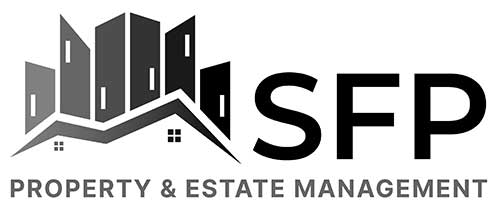In the world of property management and leasehold arrangements, leaseholders often find themselves at the mercy of managing agents or freeholders when it comes to maintaining and managing their properties. However, the Right to Manage (RTM) Company serves as a powerful tool for leaseholders to take control of their property management. We will look at the concept of a Right to Manage Company, its significance, the process of acquiring the right to manage companies, and the benefits it offers to leaseholders.
Section 1: What is a Right to Manage Company?
1.1 Defining the Right to Manage
The Right to Manage is a legal mechanism in the United Kingdom that grants leaseholders the ability to take over the management of their building without having to prove any fault on the part of the landlord’s management functions, existing managing agent or freeholder. It was introduced through the Commonhold and Leasehold Reform Act 2002 to empower leaseholders and provide them with greater control over their property’s management.
1.2 The Role of the RTM Company
To exercise the Right to Manage, leaseholders must form an RTM Company, which becomes the new entity responsible for the management and maintenance of the property. This company is typically comprised of the leaseholders themselves and is governed by a board of directors.
Section 2: The Process of Acquiring the Right to Manage
2.1 Eligibility Criteria
Not all leasehold properties are eligible for the Right to Manage. To be eligible, certain conditions must be met, including:
– The building must consist of at least two flats.
– At least two-thirds of the leaseholders in the building must be willing to participate in the RTM process.
– The building should not house any operational commercial premises exceeding 25% of the total floor area.
– The property must have at least 21 years remaining on each lease.
2.2 Initiating the RTM Process
The process of acquiring the Right to Manage is initiated by leaseholders and involves the following key steps:
2.2.1 Formation of an RTM Company
Leaseholders must come together to establish the RTM Company, which is typically done by appointing a company secretary and creating articles of association that outline the company’s objectives, structure, and operation.
2.2.2 Serving the Initial Notice
Once the RTM Company is established, the leaseholders need to serve the Initial Notice on the current freeholder or managing agent. This notice informs them of the leaseholders’ intention to exercise their right to manage the property.
2.2.3 Consultation Period
The freeholder or managing agent has the opportunity to respond to the Initial Notice. This consultation period usually lasts one month. If they agree to the Right to Manage, the transition process begins. However, if they oppose it, they must provide a valid reason for their objection.
2.2.4 Obtaining the Right to Manage
Assuming there is no successful challenge to the leaseholders’ claim, the Right to Manage is acquired, and the RTM Company assumes responsibility for the property’s management.
2.3 Cost Implications
Leaseholders should be aware that acquiring the Right to Manage may come with associated costs. These expenses can include legal fees, formation costs for the RTM Company, and any potential compensation to the previous managing agent for the loss of their contract.
Section 3: Benefits of a Right to Manage Company
3.1 Enhanced Control and Accountability
One of the primary benefits of an RTM Company is that it places control of the property management in the hands of all the leaseholders. This means that decisions regarding maintenance, repairs, and service charges are made by those who have a direct stake in the property’s well-being.
3.2 Financial Transparency
RTM Companies are often more transparent in their financial dealings compared to external managing agents. Leaseholders can directly oversee and scrutinise the budgeting and financial management functions of their property.
3.3 Improved Services
Leaseholders often have a better understanding of their own needs and priorities. This results in a more responsive approach to property management and the ability to tailor services to meet the specific requirements of the residents.
3.4 Cost Efficiency
By eliminating the need for external managing agents and their fees, RTM Companies can potentially reduce the overall costs of property management. This can lead to lower service charges for leaseholders.
3.5 Quality of Life
A well-managed property can greatly enhance the quality of life for leaseholders. With control in their hands, residents can ensure that their property is maintained to a high standard and that their concerns are promptly addressed.
Section 4: Challenges and Considerations
4.1 Legal Responsibilities
While the Right to Manage grants leaseholders control, it also imposes certain legal responsibilities and obligations on the RTM Company, such as complying with health and safety regulations and ensuring proper financial management.
4.2 Disagreements and Disputes
Disagreements among leaseholders or with the previous managing agent can arise during the Right to Manage process. It is essential to have mechanisms in place for dispute resolution.
4.3 Administrative Burden
Running an RTM Company requires administrative and organisational skills. Leaseholders and landlords may need to invest time and effort in overseeing the property’s management.
4.4 Potential Legal Challenges
In some cases, the freeholder or managing agent may challenge the Right to Manage, leading to legal proceedings that can be costly and time-consuming.
4.5 Legal Protections
Leaseholders exercising their Right to Manage can benefit from several legal protections. For instance, they cannot be evicted or penalised for participating in the RTM process. Understanding these legal safeguards is essential for leaseholders to exercise their rights confidently.
4.6 Financing the RTM Company
Financing the RTM Company is a crucial consideration. While cost savings can be achieved in the long run, the initial setup and operation of the company require funding. Leaseholders may need to explore options for raising the necessary capital, such as contributions from members or securing loans.
4.7 Transition Period
The transition period from the previous managing agent or freeholder to the RTM Company can be a challenging phase. Leaseholders must ensure a smooth transfer of responsibilities and gather all essential documentation related to the property.
4.8 Ongoing Management
Once the RTM Company has taken control, it is essential to focus on efficient and effective management. Leaseholders should establish clear communication channels, maintenance schedules, and service quality benchmarks to maintain a high standard of living for all residents.
Conclusion
In conclusion, the Right to Manage Company is a valuable tool that empowers leaseholders to seize control of their property’s management responsibilities. By forming an RTM Company, they can enhance control, transparency, and service quality while potentially reducing costs. While this process may come with certain challenges, it offers significant rewards that can fundamentally improve the quality of life for residents.
It is important for leaseholders to be well-informed about their eligibility, responsibilities, and the legal framework surrounding the Right to Manage. This knowledge equips them to make the most of this opportunity.
As we’ve seen in the success stories, the Right to Manage can be a transformative force, turning deteriorating properties into well-maintained, vibrant communities and helping residents achieve financial stability. While there are hurdles to overcome, the benefits are considerable and can make a lasting positive impact on leaseholders’ lives.
In conclusion, the Right to Manage is more than a legal provision; it’s a pathway to self-determination and community improvement for leaseholders in the UK. By understanding and embracing this right, they can take control of their property’s destiny and create a brighter, more prosperous future for themselves and their neighbours.

